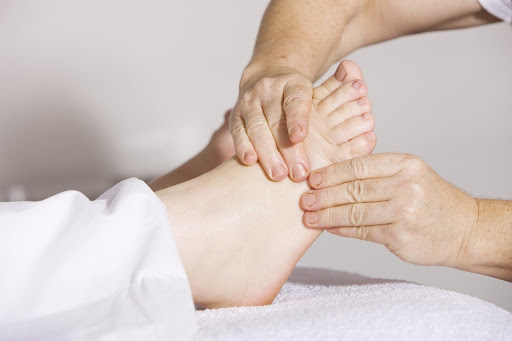

BECOME AN EXPERT AT PAIN MANAGEMENT WITH THESE SEVEN TECHNIQUES

Pain is a very common condition, it can be acute and chronic. It is a pathologically complex condition. Pain can be caused by injuries, surgery or diseases such as cancer, arthritis, obesity. Pain can also be caused by improper posture, wearing the wrong kind of shoes, sleeping on the wrong kind of mattresses, lack of nutrition, etc.
Pain management includes pharmacological (use of medicines) and non-pharmacological methods (without the use of medicines). In this article we shall explore seven popular pain management techniques, most of these techniques are non-invasive.
1. Therapeutic Massage
a. Massage Therapy works the tension out of muscles and joints. Massage also relates to the anxiety and stress connected to pain. The most common form of massage therapy is a common massage or Swedish massage.
b. There are different types of massage therapies and techniques applicable to different types of body pain. Oil massage therapies are also available as a part of ayurvedic pain management techniques.
2. Cold and Heat Press
a. Apply a hot press for 20-30 minutes every few hours. The heat helps decrease pain and muscle spasms.
b. Ice packs help to ease inflammation, pain and tissue damage, place it on the area for 15 to 20 minutes every hour or as directed.
3. Physical Therapy
a. This is one of the best techniques for pain management. Physical and Occupational therapists guide you through a series of exercises that cause gradual improvement in movement. It also helps in strengthening the affected muscles.
b. Gentle exercise and physical therapy make your body release endorphins which are naturally occurring pain killers.
c. There are many types of physical therapy, such as; Aqua Therapy, Desensitization, and Tone and Strengthening.
4. Pain Medications
a. The main classes of pain medications include NSAIDs (Non-Steroidal Anti Inflammatory Drugs), local anesthetics, some anti-epileptic drugs. The most commonly used over-the-counter drugs are NSAIDs such as paracetamol, aspirin, ibuprofen, etc.
b. These medicines are symptomatic, they reduce inflammation and alleviate pain. It is important to understand that one cannot completely depend on medicine to manage pain. You should consult a doctor and never self medicate.
c. Pain medication should come under emergency care and should be coupled with other kinds of therapy.
5. Neurostimulation
There are different kinds of neurostimulation for pain management:
a. TENS (transcutaneous electrical nerve stimulation) unit: This is a portable, battery-powered device that is usually placed over the area of pain. It emits mild, safe electrical signals to help control pain.
b. Spinal Cord Stimulator ( SCS): This an electrode implanted near the spinal cord via a simple procedure. The electrode is connected to a stimulator that sends mild, safe electrical signals, this helps relax the nerves that cause pain.
c. Acupuncture: This involves inserting thin needles into specific points on the skin. It aims to restore balance within the body and encourage it to heal by releasing natural pain-relieving compounds (endorphins). This is a form of traditional Chinese medicine.
6. Relaxation Techniques
a. Meditation and Yoga: This can take the focus out of your pain and helps in delocalize the pain. This helps in the holistic improvement and helps strengthen the mind and body.
b. Aromatherapy: This can be practiced independently or with massage, meditation, and yoga. Aromatherapy is the inhalation of scents from oils, natural extracts, or fragrances from flowers, herbs, and trees. This helps relieve stress and pain.
c. Deep Breathing: Take a deep breath in, hold it for a few seconds and exhale slowly.
d. Guided Imagery: you are guided through imaginary mental images of sights, sounds, tastes, smells, and feelings that can help shift attention away from the pain. This is a form of distraction and is often coupled with relaxing exercises.
e. Hypnosis: This is performed by a trained professional, patients are transported into an altered state of consciousness. The patient no longer pays attention to the pain.
f. Music: Music therapy is indulgent and helps elevate the energy levels of the patient, thus helps the body in releasing endorphins.
7. Counseling
Counseling can be individual, family or group counseling. Counselling aims to improve the patient’s mental and emotional well-being. Pain can make you depressed, angry or anxious, these make the experience of pain even worse. Patients are advised to contact their local therapists or counselors.
Cognitive Behavior Therapy (CBT) has been extensively used to help manage chronic pain. CBT is short term and can be monitored. It helps in how we think about pain and in turn how we handle it. It uses several tools such as thought tracking, automatic thoughts, etc.
In conclusion, pain management techniques are mostly used alongside each other and not always independently. Dealing with long term pain can be very trying both mentally and physically, do not isolate yourself and be open about your struggles. None of the above-mentioned pain management techniques guarantee to permanently alleviate pain. If you have long-term chronic pain you should seek professional medical help.














